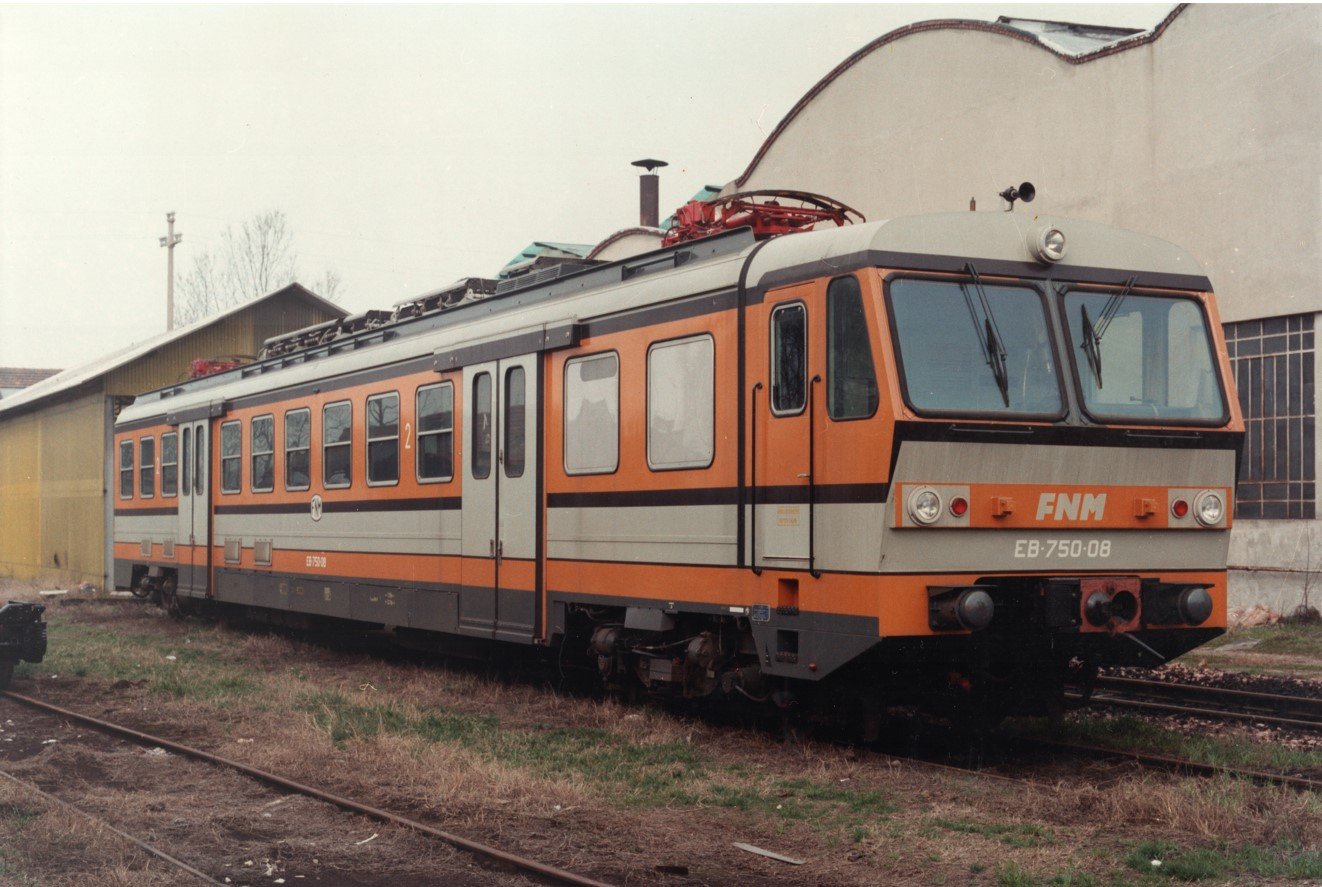The Class EB 750 Electric Railcars, later the EA 750, were the first electric railcars acquired by FNM after the last BREDA EB 740s were delivered in 1957. They were ordered in 1979 with funds from Law 493/75 and Regional Law 22/78. In the 1970s, power electronics and the Chopper drive system were being developed in the railway industry with trains produced by the Consorzio Gai. The FNM 750s were the result of a complex decision involving the production of newly designed fixed composition trains. Engine plus Casaralta (on concession from CIMT) double-decker coaches or SOCIMI single-decker coaches. The main features of the 750s were the newly designed body and bogies. The body was in lightweight alloy panels; the bogies have a lightweight steel box structure with pneumatic secondary suspension and coil spring primary suspension. The innovative features were the Full-Chopper electronic traction system, the 70 KVA uninterruptible power supply, and the pneumatic and electric braking system with wheel slide and wheel spin protection. Cab-side automatic coupler.
EB-750

- Progettazione: 1979
- Costruzione: 1981-1984
- Esercizio: dal 1982
- Massa a pieno carico: t.64
- Rodiggio: Bo’ Bo’
- Ruote motrici Ø: 860 mm
- Costruttore: Cons. G.A.I.
- Lunghezza fuori tutto: 24.900 mm
- Larghezza: 2.950 mm
- Altezza imperiale: 3.716 mm
- Passo carrelli: 2.560 mm
- Passo totale: 20.060 mm
- Interperno carrelli: 17.500 mm
- Velocita massima: 130 Km/h
- Potenza continuativa: 1.120 kW
- Posti a sedere: 72
- Posti totali: 174
- Alimentazione: 3 kV CC/Chopper
- Design date: 1979
- Build date: 1981-1984
- Service date: dal 1982
- Gross weight: 64 tons
- Wheel arrangement: Bo-Bo
- Diameter of the driving wheels: 860 mm
- Builder: Cons. G.A.I.
- Overall length: 24,900 mm
- Width: 2,950 mm
- Roof height: 3,716 mm
- Bogie wheelbase: 2,560 mm
- Overall wheelbase: 20,060 mm
- Distance between bogie centres: 17,500 mm
- Maximum speed: 130 Km/h
- Continuous power: 1,120 kW
- Passenger capacity: 72
- Total capacity: 174
- Voltage: 3 kV CC/Chopper
The body of the class E 750 electric railcars is made from extruded panels in lightweight alloy with vestibules and sliding pneumatic access doors in a central position. The coach was divided into three compartments. The compartment at the head housed the driving cab and two modules with blocked-out windows: these modules housed high-voltage equipment on one side and the short corridor leading to the driving cab on the other. Unlike the previous generation of trains, the driving cab occupies the full width of the engine head, with two large windscreens, as there is no interconnection. The two passenger sections are also divided into 6 and 3 modules, each with 8 seats, originally all second class. With the conversion of the original EAB 850 mixed control trailers into second class coaches, the EB 750 were converted into EA 750 first class coaches.

